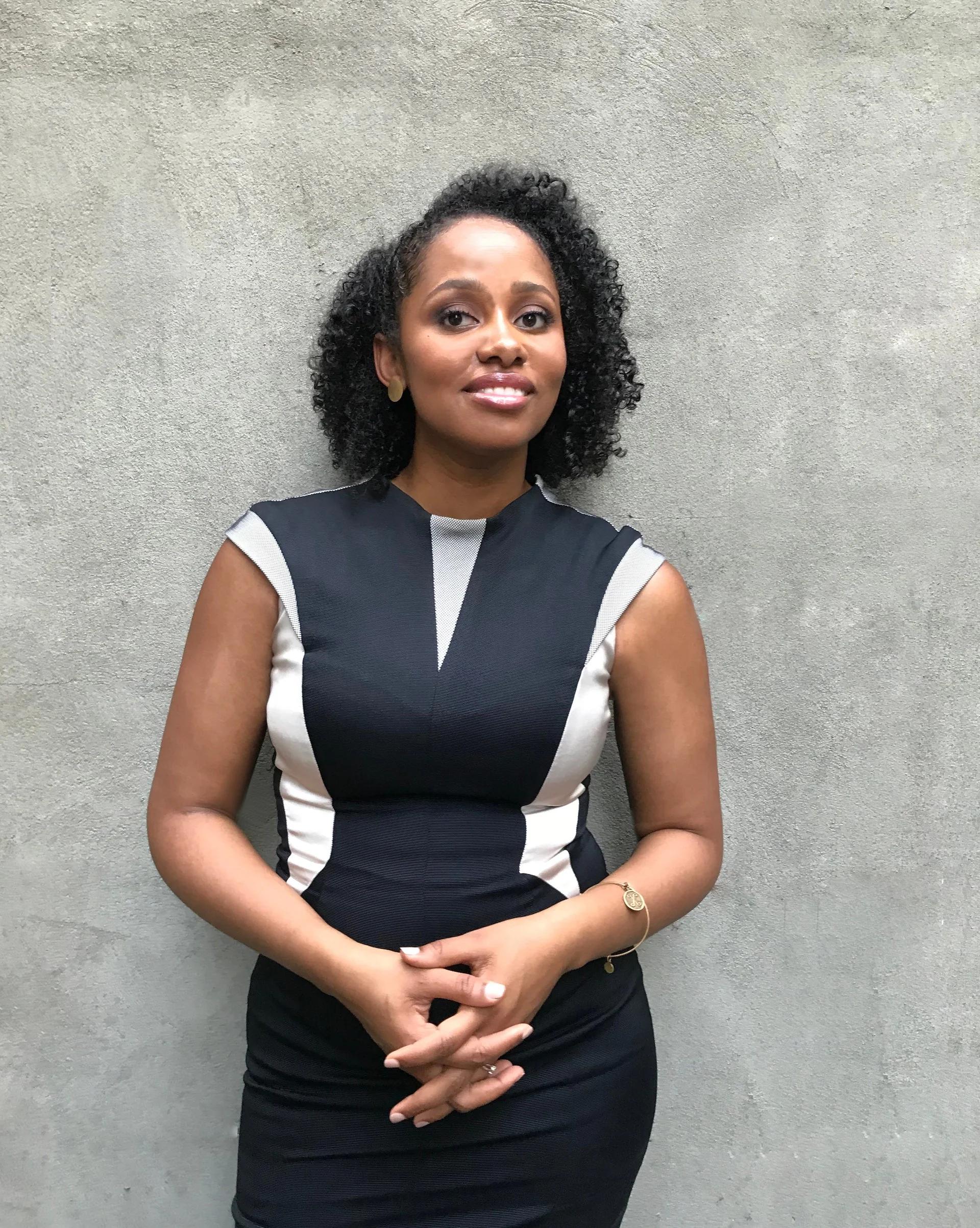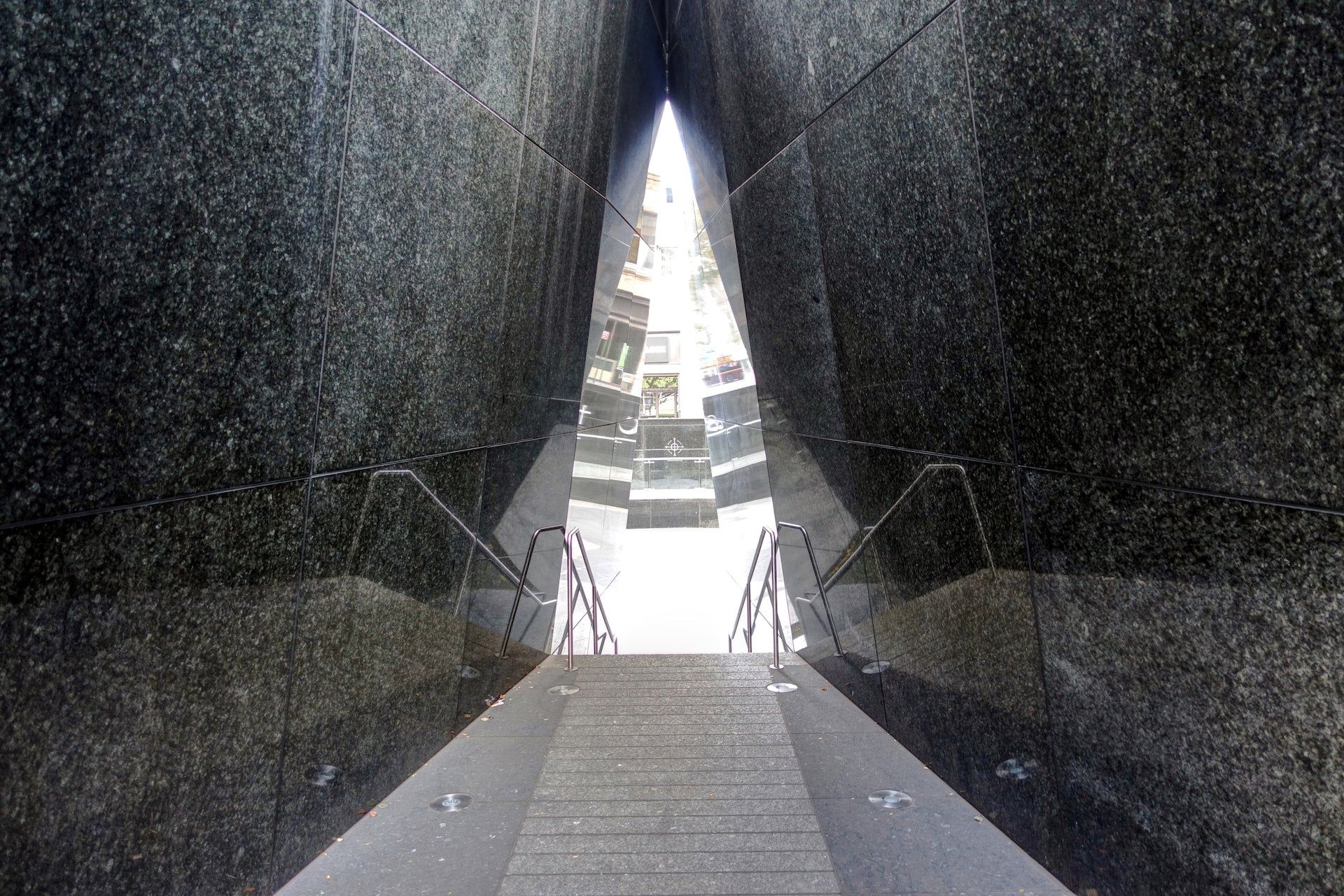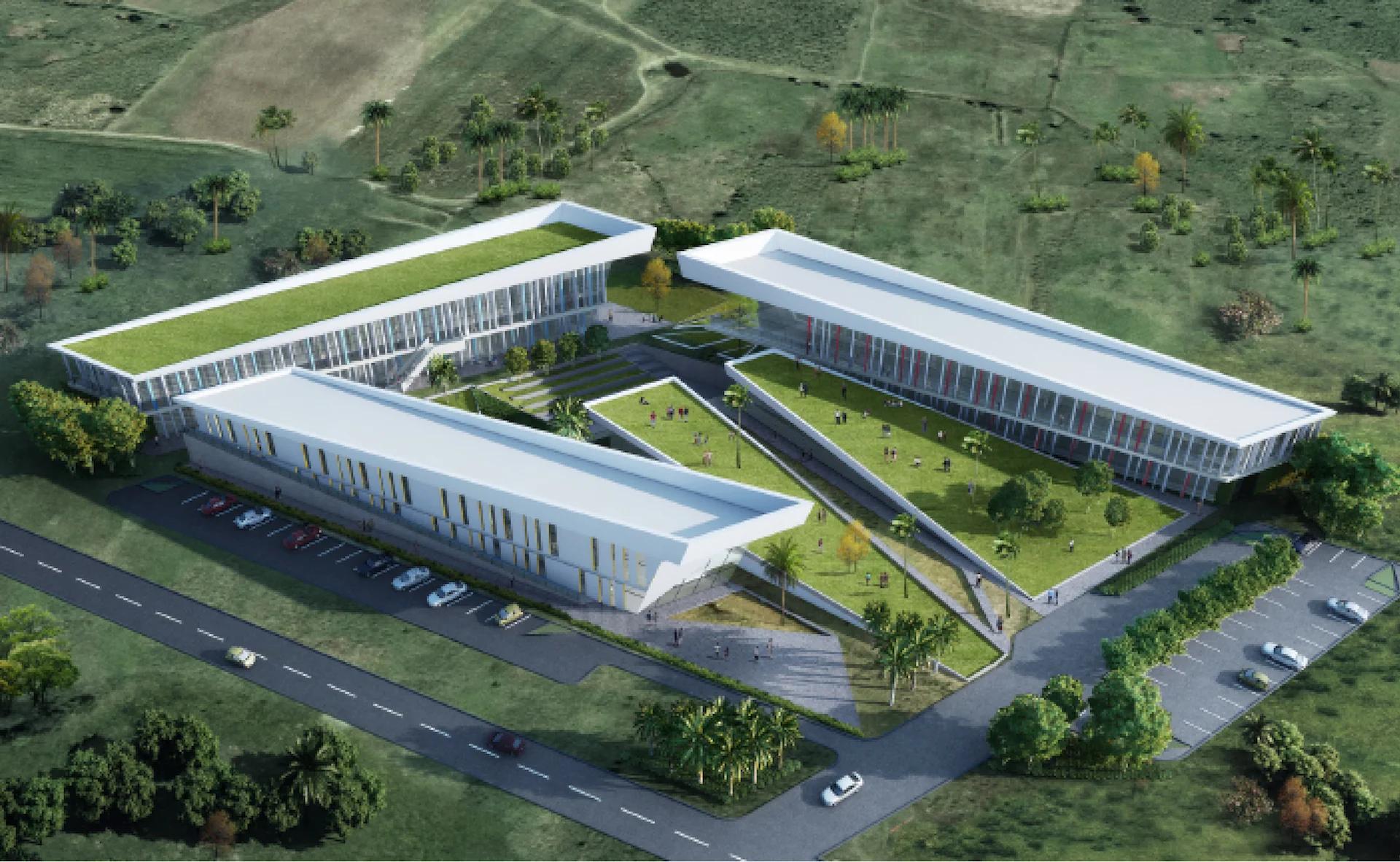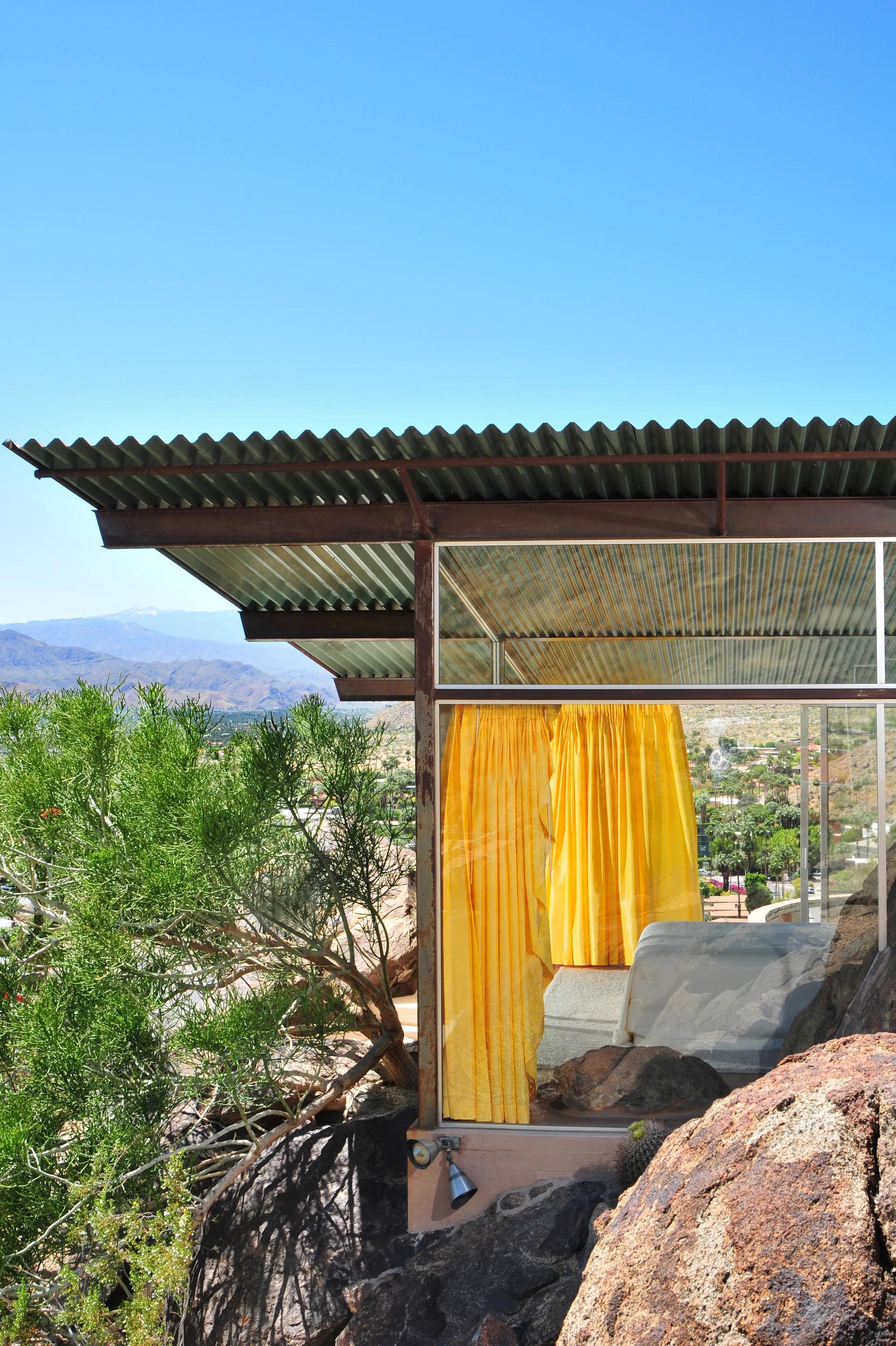ARCHITECTURE & URBAN DESIGN AUGUST 27 2021
by Anna Carnick
A conversation with architect and activist Pascale Sablan

PASCALE SABLAN, ARCHITECT AND ACTIVIST
Photo courtesy of Pascale Sablan
Pascale Sablan is a force to be reckoned with. Throughout her award-winning architecture and advocacy work, Sablan embraces a community-driven approach that elevates others while tackling inequities. Sablan—the 315th living female Black registered architect in the US—has worked on an array of projects both locally and internationally, including multiple rebuilding projects in Haiti over the past decade. This past year, the New Yorker became an associate at powerhouse Adjaye Associates as well as President-Elect of NOMA, the National Organization of Minority Architects.
In 2018, Sablan launched Beyond the Built Environment, an organization that engages the community through architecture to advocate for equitable, diverse environments—celebrating the work of underrepresented female and BIPOC designers through a range of programming and initiatives, including lectures, traveling exhibitions, a media pledge that holds publications accountable for producing inclusive content, and a digital library spotlighting the work of over 660 diverse architects.
We chatted with Sablan about the story behind Beyond the Built Environment, her ongoing mission, and her best advice for young creatives.

PASCALE SABLAN
Photo courtesy of Pascale Sablan
Design Miami/What was the original motivation behind launching Beyond the Built Environment?
Pascale Sablan/I founded Beyond the Built Environment to represent marginalized people both within the profession and in communities most underserved by the profession. We aim to involve everyone, from preschoolers to practitioners and pundits, as critical stakeholders and advocates for just, diverse environments.
To do so, we engage audiences through a range of initiatives that promote intellectual discourse. We elevate the identities and contributions of women and diverse designers through lectures, documentaries, and exhibitions—like our traveling SAY IT OUT LOUD series. We educate through formal and informal learning opportunities that introduce architecture as a bridge to fill the gaps of inequity. And we collaborate with community stakeholders and organizations.
DM/Tell us about the name, please.
PS/The name Beyond the Built Environment was a prompt for members of the profession to see their responsibilities in architecture extend beyond what we draw and build to also how and for whom.
DM/What are you most proud of so far in the organization’s first few years?
PS/The BBE Team is so proud to have hosted not only 24 SAY IT LOUD exhibitions with another four planned this year, but the resulting free resource of the Great Diverse Designers Library that captures everyone who has ever been featured in our exhibition (organized by last name or by location). We currently are elevating and celebrating 660 diverse designers and growing!

LEFT: VIEW OF A SAY IT LOUD EXHIBITION AT THE AMERICAN INSTITUTE OF ARCHITECTS NEW YORK (AIANY), CURATED BY PASCALE SABLAN AND DESIGNED BY MANUEL MIRANDA | RIGHT: SAY IT LOUD EXHIBITION IN OHIO
Left: Photo © Cameron Blaylock | Right: Photo © Cleveland Cavalliers Photography
DM/What gives you the most joy in your work—as an architect and/or with Beyond the Built Environment’s advocacy efforts?
PS/All the work is quite fulfilling, but one of the parts of this most rewarding advocacy work is when those typically neglected by the profession engage with us. I aspire to inspire marginalized groups to understand the important role they can have in deciding and designing their environments sparked by the elevation of our marginalized, trailblazing legends and heroes.

LEFT: SAY IT LOUD EXHIBITION AT THE UNITED NATIONS INFORMATION CENTER WORLDWIDE (UNIC) IN BUJUMBURA, BURUNDI | RIGHT: SABLAN AND JOEL AVERY GATHERING THE TESTIMONIAL OF URBAN DESIGNER RENE KEMP-ROTAN DURING A NOMA NATIONAL CONFERENCE
Photos © Pascale Sablan
DM/For those less familiar, can you explain what it means to place the community at the center of your architectural/design approach?
PS/In underserved communities, poorly appointed architecture perpetuates inequity. These inequities more often adversely affect communities of color. As an architect, I deeply value collaborative processes of creating environments that reflect and sustain diversity and the dignity of human life. Representation is quintessential to achieving diversity.
Therefore with my projects, we have extensive community engagement and research. Not just researching what is on the site currently but what was there in the past and what they aspire for in the future. We work to embed their culture into the built environment by addressing their needs and by giving community members a consistent seat at the design table.

SABLAN WORKED WITH STUDENTS IN THE ACE MENTOR PROGRAM TO REDESIGN THE ASSOCIATION OF HAITIAN PHYSICIANS ABROAD (AMHE) HAITI CAMPUS, WHICH WAS DEVASTATED BY THE 2010 EARTHQUAKE
Photos courtesy of Pascale Sablan
DM/You’ve taken on a variety of projects in a multitude of places throughout your architectural career. What are the consistent threads that connect all the projects in your mind?
PS/The first project that crafted my approach towards architecture was the African Burial Ground National Monument in New York, which I worked on as an intern early on in my career. This project—led by Rodney Léon and Nicole Hollant Denis—is an example of Architecture serving as an Advocate. The African Burial Ground National Monument keeps history and shares the existence of the estimated 15,000 African remains buried under City Hall and the neighboring federal buildings. The powerful responsibility to service the public through projects that honor the community’s embedded history became a part of my ethos as an architect.

AFRICAN BURIAL GROUND NATIONAL MONUMENT IN NEW YORK
Photo via of Wikimedia Commons
DM/Congratulations on your new position at Adjaye Associates and your appointment as President-Elect of NOMA. What are you most looking forward to with these positions?
PS/In both my roles as President-Elect of NOMA and being an Associate at Adjaye Associates, I'll be both an Architect and an Advocate. During my presidency in 2023 and 2024, I hope to continue to grow NOMA and build on its 50 year legacy of fighting for justice. As an Associate in the New York office, I will be running projects as well as working with the senior team on project management, business development, and supporting diversity and advocacy work.
To have the ability to hold both parts of my identity while working on world-impacting projects that push for design justice is a dream come true! For those like me who were told we had to choose, we can do both!

AERIAL VIEW OF THE MILOT, HAITI VOCATIONAL SCHOOL CAMPUS, DESIGNED BY ARCHITECT PASCALE SABLAN
Photo © Pascale Sablan
DM/Where would you like to see Beyond the Built Environment 10 years from now? 20?
PS/ In 20 years it would be a blessing to continue to host SAY IT LOUD exhibitions worldwide, to have a dozen or so children's pop-up books published to introduce these important figures to young kids, and to have hundreds or even thousands of locations active in our SEE IT LOUD augmented reality app (or relevant technology)—resulting in a field that has eradicated racism, sexism, and oppression from the building environment and profession.
DM/What piece of advice would you give to any young students or designers just starting?
PS/My advice is framed in three favorite quotes that serve as my own constant source of inspiration:
"You can’t be what you can’t see.” — Marian Wright Edelman
"For every injustice in this world, there is an architecture that has been designed to facilitate and perpetuate it." —Bryan Lee
"Impossible is for the Unwilling." —John Keats ◆
To learn more about Beyond The Built Environment’s work, including upcoming SAY IT LOUD exhibitions in multiple cities, check out beyondthebuilt.com.

